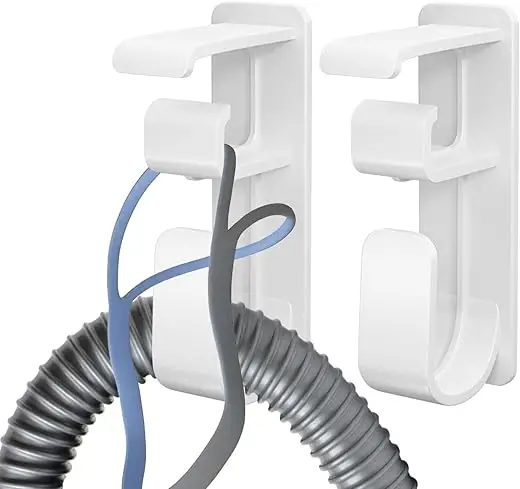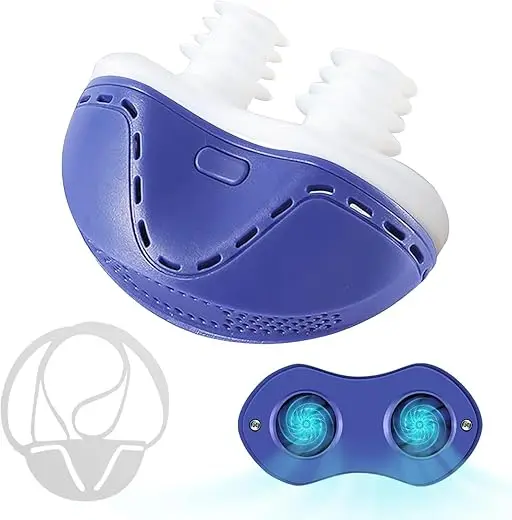The Shocking Truth About Women and Sleep Apnea
For decades, sleep apnea was considered a “man’s disease” – the stereotype of an overweight, middle-aged man who snores loudly. This dangerous misconception has left millions of women undiagnosed and untreated. The reality? Women are just as likely to develop sleep apnea as men after menopause, and younger women face unique risks during pregnancy, with PCOS, and during hormonal transitions.
Women with sleep apnea are misdiagnosed with depression, anxiety, fibromyalgia, or chronic fatigue syndrome an average of 10 times before receiving the correct diagnosis. They suffer for an average of 10 years before getting proper treatment – 3 years longer than men. This guide will reveal why sleep apnea symptoms in women are so different, so often missed, and what you can do about it.
Why Sleep Apnea Presents Differently in Women
The Hormonal Protection Factor
Before menopause, female hormones provide partial protection against sleep apnea through several mechanisms:
Estrogen’s Role:
- Maintains upper airway muscle tone
- Reduces inflammation in airways
- Protects against weight gain patterns that cause OSA
- Influences breathing control centers
- Maintains sleep architecture
Progesterone’s Effect:
- Respiratory stimulant
- Increases ventilatory drive
- Protects airway patency
- Reduces apnea threshold
- Improves oxygen sensitivity
When Protection Fails:
- Menopause (estrogen drops 90%)
- PCOS (hormone imbalance)
- Pregnancy (progesterone resistance)
- Birth control pills (synthetic hormones)
- Surgical menopause (sudden change)
Anatomical Differences
Women’s airways differ from men’s in crucial ways:
Structural Variations:
- Smaller airway diameter
- Different fat distribution (lower neck, more tongue base)
- Less collapsible upper airway (until menopause)
- Different pharyngeal length
- More flexible soft tissues
Fat Distribution Patterns:
- Lower body accumulation typically
- Less neck circumference increase
- More tongue and soft palate fat
- REM-related collapse pattern
- Changes dramatically at menopause
The Unique Symptoms: What Women Experience
Classic Symptoms Women DO Have (But Describe Differently)
Fatigue vs. Sleepiness Women say: “I’m exhausted all the time” Men say: “I could fall asleep anywhere”
This linguistic difference leads to misdiagnosis. Women describe bone-deep exhaustion, lack of energy, and feeling drained rather than sleepy. Doctors often attribute this to depression, anemia, or thyroid issues without considering sleep apnea.
Morning Headaches
- 40% of women with OSA vs. 25% of men
- Often misattributed to tension or migraines
- Bilateral, pressing quality
- Improves within hours
- Responds to CPAP dramatically
Insomnia Presentation
- 50% of women with OSA have insomnia
- Difficulty maintaining sleep more than initiating
- Multiple awakenings
- Early morning awakening
- Racing thoughts attributed to anxiety
Symptoms More Common in Women
Restless Legs Syndrome (RLS)
- Present in 35% of women with OSA
- Only 15% of men
- Worsens with pregnancy
- Iron deficiency connection
- Disrupts sleep initiation
Depression and Anxiety
- 45% of women with OSA diagnosed with depression
- Morning anxiety particularly common
- Panic attacks during sleep
- Mood swings throughout day
- Often treated with antidepressants unsuccessfully
Thyroid-Like Symptoms
- Weight gain despite diet
- Hair loss or thinning
- Dry skin
- Cold intolerance
- Constipation
- Often leads to unnecessary thyroid treatment
Fibromyalgia-Like Pain
- Morning stiffness
- Widespread pain
- Tender points
- Fatigue with pain
- 45% of fibromyalgia patients have sleep apnea
Symptoms Women Are Less Likely to Report
Snoring
- Women underreport snoring by 40%
- Social stigma and embarrassment
- Partners less likely to complain
- Quieter, higher-pitched snoring
- May only occur in REM sleep
Gasping and Choking
- More subtle presentation
- Described as “catching breath”
- Less dramatic than men
- Partner may not notice
- Attributed to anxiety or acid reflux
Sexual Dysfunction
- Rarely discussed with doctors
- Decreased libido
- Difficulty with arousal
- Anorgasmia
- Relationship strain
Life Stage Variations: How Symptoms Change
Young Women (20s-30s)
PCOS Connection:
- 35-40% with PCOS have sleep apnea
- Even at normal weight
- Insulin resistance link
- Testosterone elevation
- Fertility impacts
Pregnancy-Related:
- 26% develop in third trimester
- Gestational diabetes correlation
- Preeclampsia risk doubled
- Postpartum depression link
- May resolve after delivery
Early Warning Signs:
- Irregular periods with fatigue
- Weight gain in midsection
- Mood changes
- Brain fog
- Exercise intolerance
Perimenopausal Women (40s-early 50s)
Hormonal Chaos Period:
- Fluctuating hormones
- Night sweats vs. sleep apnea sweats
- Insomnia increases
- Mood swings intensify
- Weight redistribution
Misattributed Symptoms:
- Everything blamed on perimenopause
- Hot flashes may be apnea events
- Cognitive changes dismissed
- Anxiety considered “normal”
- Treatment delays common
Red Flags:
- Sudden snoring onset
- Weight gain despite lifestyle
- Worsening insomnia
- Morning headaches increasing
- Partner notices breathing changes
Post-Menopausal Women (50s+)
Risk Equals Men:
- 25% prevalence post-menopause
- Severity increases rapidly
- Cardiovascular risks compound
- Cognitive decline accelerates
- Osteoporosis connection
Unique Presentations:
- Nocturia (2-4x nightly)
- Morning confusion
- Balance problems
- Voice changes
- Dry mouth severe
Complications:
- Faster progression to dementia
- Higher stroke risk than men
- Osteoporotic fractures
- Depression treatment-resistant
- Social isolation
The REM-Related Pattern: A Female Phenomenon
Understanding REM-Predominant OSA
Women are more likely to have sleep apnea that occurs primarily during REM sleep:
Characteristics:
- Normal breathing in non-REM
- Severe apnea during REM (dreams)
- AHI may seem mild overall
- Symptoms worse than numbers suggest
- Standard testing may miss
Why This Matters:
- REM is only 20-25% of night
- Home tests may miss REM periods
- First-night effect reduces REM
- Severity underestimated
- Treatment still necessary
Symptoms of REM-OSA:
- Vivid, disturbing dreams
- Night terrors
- Sleep paralysis episodes
- Morning mood disturbance
- Cognitive impacts severe
Pregnancy and Sleep Apnea: A Critical Time
Prevalence During Pregnancy
By Trimester:
- First: 10%
- Second: 15%
- Third: 26%
- Postpartum: 15% persist
Risk Factors:
- Pre-pregnancy obesity
- Excessive weight gain
- Multiple pregnancy
- Maternal age >35
- Previous gestational diabetes
Unique Pregnancy Symptoms
Different from Normal Pregnancy:
- Snoring starting second trimester
- Excessive fatigue beyond normal
- High blood pressure developing
- Swelling more than expected
- Headaches increasing
Complications for Mother:
- Gestational diabetes (2x risk)
- Preeclampsia (2.5x risk)
- Cesarean delivery increased
- Postpartum depression (3x risk)
- Cardiovascular complications
Complications for Baby:
- Low birth weight
- Preterm delivery
- NICU admission
- Lower Apgar scores
- Developmental concerns
Treatment During Pregnancy
Safe Options:
- CPAP (preferred)
- Positional therapy
- Dental appliances
- Weight management
- Nasal strips/dilators
Benefits of Treatment:
- Reduced complications
- Better fetal growth
- Lower C-section rate
- Improved mood
- Better bonding postpartum
The Misdiagnosis Epidemic: What Women Are Told Instead
Common Misdiagnoses
Depression
- Most common misdiagnosis
- Antidepressants prescribed
- Symptoms worsen over time
- Sleep issues dismissed
- Years of ineffective treatment
Anxiety Disorders
- Morning anxiety misinterpreted
- Panic attacks during sleep
- Anxiolytics prescribed
- May worsen sleep apnea
- Cognitive symptoms ignored
Chronic Fatigue Syndrome
- Fatigue primary complaint
- Extensive testing done
- No specific treatment
- Disability may result
- Sleep study not ordered
Fibromyalgia
- Pain and fatigue combination
- Tender points present
- Pain medications given
- Sleep quality ignored
- Progressive worsening
Thyroid Disorders
- Similar symptom profile
- TSH may be borderline
- Thyroid medication started
- No improvement seen
- Real cause missed
Why Doctors Miss It
Medical Bias:
- Textbooks show male patients
- Studies historically male-focused
- Screening tools male-oriented
- Stereotypes persist
- Different vocabulary used
Presentation Differences:
- Insomnia vs. sleepiness
- Fatigue vs. snoring
- Mood vs. physical symptoms
- REM-predominant pattern
- Lower AHI thresholds
System Failures:
- Short appointment times
- Fragmented care
- Multiple specialists
- Poor screening protocols
- Insurance barriers
Getting Properly Diagnosed: A Woman’s Guide
Self-Advocacy Strategies
Document Everything:
- Sleep diary for 2 weeks
- Energy levels 1-10 scale
- Mood tracking
- Partner observations
- Video recording if possible
Use Specific Language: Say: “I have unrefreshing sleep with frequent awakenings” Not: “I’m tired”
Say: “My partner notices pauses in my breathing” Not: “I might snore a little”
Say: “I have excessive daytime fatigue affecting my work” Not: “I don’t have much energy”
Screening Tools for Women
Modified Questions: Instead of: “Do you snore loudly?” Ask: “Has anyone noticed you breathing irregularly during sleep?”
Instead of: “Do you feel sleepy during the day?” Ask: “Do you feel exhausted despite adequate sleep time?”
Instead of: “Has anyone seen you stop breathing?” Ask: “Do you wake up gasping, with your heart racing, or feeling anxious?”
When to Insist on Testing
Absolute Indications:
- Post-menopausal with new symptoms
- PCOS diagnosis
- Treatment-resistant depression
- Unexplained hypertension
- Morning headaches
- Partner observations
Relative Indications:
- Perimenopause with fatigue
- Weight gain with lifestyle efforts
- Cognitive changes
- Mood disorders
- Insomnia with exhaustion
Treatment Considerations for Women
CPAP Challenges and Solutions
Mask Issues:
- Smaller facial features
- Skin sensitivity
- Claustrophobia more common
- Hair and makeup concerns
- Partner perception worries
Solutions:
- Nasal pillows often better
- Cloth mask liners
- Gradual desensitization
- Morning routine adjustments
- Partner education crucial
Hormone Therapy Considerations
Potential Benefits:
- May reduce AHI slightly
- Improves sleep quality
- Helps with other symptoms
- Cardiovascular protection
- Bone health benefits
Important Notes:
- Not a cure for sleep apnea
- CPAP still needed
- Combination approach best
- Individual risk assessment
- Monitor closely
Alternative Treatments
Oral Appliances:
- Better aesthetic acceptance
- Easier for travel
- Good for mild-moderate
- TMJ considerations
- Regular dental monitoring
Positional Therapy:
- REM-OSA responsive
- Pregnancy-safe
- Simple implementation
- Combined with other treatments
- Long-term compliance challenges
Success Stories: Women Who Found Answers
Case 1: The Misdiagnosed Mother
Sarah, 42, treated for depression for 8 years. Exhausted, gained 40 pounds, marriage strained. Finally diagnosed with moderate OSA (AHI 22). After 3 months of CPAP: off antidepressants, lost 20 pounds, energy restored, saved marriage.
Case 2: The PCOS Patient
Maria, 28, struggling with PCOS and infertility. Sleep study revealed severe OSA despite normal weight. CPAP treatment for 6 months: conceived naturally, healthy pregnancy, symptoms improved dramatically.
Case 3: The Post-Menopausal Executive
Linda, 58, blamed everything on menopause. Cognitive decline affecting work, considering early retirement. Diagnosed with severe REM-related OSA. After treatment: mental clarity restored, promoted to senior partner, “got my life back.”
The Health Consequences: Why Treatment Can’t Wait
Women-Specific Risks
Cardiovascular:
- Stroke risk higher than men
- Atrial fibrillation common
- Heart failure presentation different
- Pulmonary hypertension
- Sudden cardiac death
Cognitive:
- Earlier dementia onset
- Faster Alzheimer’s progression
- Executive function impacts
- Memory particularly affected
- Depression comorbidity
Metabolic:
- PCOS worsening
- Diabetes harder to control
- Weight loss resistance
- Metabolic syndrome
- Inflammation markers elevated
Reproductive:
- Infertility
- Pregnancy complications
- Sexual dysfunction
- Relationship impacts
- Postpartum depression
Taking Action: Your Personal Plan
Week 1: Assessment
- Complete women-specific screening
- Start sleep diary
- Track energy and mood
- Document all symptoms
- Partner observation sheet
Week 2: Preparation
- Find sleep specialist
- Gather medical history
- List all medications
- Document previous diagnoses
- Prepare questions
Week 3: Medical Consultation
- Present documented symptoms
- Discuss women-specific concerns
- Request appropriate testing
- Discuss treatment options
- Get support resources
Month 2: Treatment Start
- Begin recommended therapy
- Track improvements
- Address any issues
- Join women’s support group
- Optimize treatment
The Bottom Line: Your Sleep Matters
Sleep apnea in women is not rare – it’s rarely diagnosed. The constellation of symptoms that women experience – exhaustion, insomnia, mood changes, headaches, and cognitive difficulties – paints a picture that’s often misinterpreted as depression, anxiety, or “normal” aging.
If you recognize yourself in these symptoms, trust your instincts. You know your body better than anyone. Don’t accept exhaustion as your new normal. Don’t let anyone dismiss your concerns as “just stress” or “hormones.” Sleep apnea is a serious medical condition that deserves proper diagnosis and treatment.
The good news? Once properly diagnosed, women often respond exceptionally well to treatment. The transformation can be dramatic – energy returns, mood lifts, cognitive function improves, and life becomes vibrant again. You deserve to wake up refreshed, to have energy for your life, and to feel like yourself again.
Don’t wait another day. Your health, your relationships, and your quality of life depend on getting the sleep your body needs. The journey to diagnosis may require persistence, but the destination – restored health and vitality – is worth every effort.
Share this with the women in your life. Together, we can close the gender gap in sleep apnea diagnosis and ensure every woman gets the treatment she deserves.



